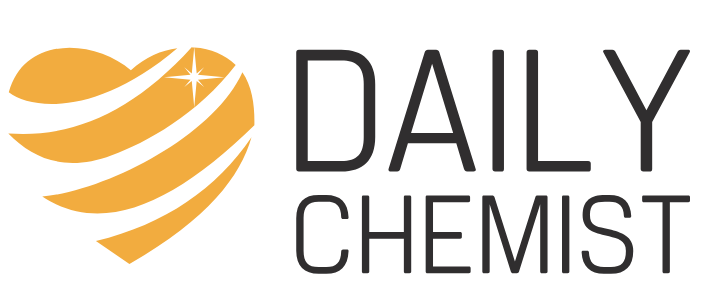What is a migraine?
Migraine is a neurological disorder. It causes recurring headaches. The pain can be so intense that it interferes with a person’s ability to go about his or her daily life. The disease is not only about bad headaches. Pulsating pain and other migraine symptoms can last from 4 to 72 hours. Nevertheless, effective remedies can help manage your condition.
How severe can such headaches be?
According to the World Health Organization (WHO), migraine is the third most prevalent illness in the world.
The number of people worldwide affected by such pulsating headaches is around 1 billion. An episode can cause throbbing pain. Moreover, it makes sufferers virtually unable to function for many hours or even days each month.
What are the symptoms of this neurological disease?
In this type of headache, the main symptoms are recurring attacks of head pain that vary in severity. Moreover, the condition can also be associated with nausea and vomiting during the attack. The symptoms can also occur within a few hours after the headache. Typically, nausea is frequent during the prodromal (warning) stage. It occurs before the actual headache begins. Nevertheless, if you experience such symptoms, use your migraine treatment.
What are the stages?
Such throbbing head pain often comes with neuropsychiatric symptoms. They can occur before the headache begins (“prodrome”), during the headache itself, or after hours it ends. These signs and symptoms are known as aura.
Migraine symptoms in the Prodrome stage may include-
- Fatigue
- Mood changes
- Cravings for specific food(s)
- Rigidness in the muscles
- Constipation
- Diarrhoea
During headaches, most individuals have severe throbbing pain on one side. Moreover, pain can also take place in a specific location. Discomfort typically increases progressively, reaching maximum intensity within an hour. However, it subsides gradually. Other symptoms that commonly occur during the headache phase are-
- Sensitivity to light (photophobia)
- Sensitivity to sound(hyperacusis)
- Nausea or vomiting
- Increased need to urinate
- Sensory disturbances such as numbness or tingling in the extremities
Postdrome refers to symptoms that occur after an attack passes. These symptoms include-
- Fatigue
- Mood changes
- Problems with thinking clearly or concentrating
Moreover, these postdrome symptoms can last for days after the actual headache is gone. However, not every person experiences these symptoms.
On average, the condition can last between 4 and 72 hours. Moreover, the symptoms may also vary in terms of their associated features. They also differ based on activities of daily living.
What causes this neurological disorder?
The exact cause isn’t known. However, several factors lead to a pulsating headache.
Certain foods and drinks often induce migraine symptoms. These inducers can be dissimilar for each person. Moreover, it also depends on the circumstances, such as lifestyle, emotional stress, and lack of sleep.
Some factors that are known to trigger uneasiness are-
- Hormonal changes
- Physical, emotional, or mental stress
- Overexertion and strenuous physical activity
- Irregular sleep and long hours of work
- Bright lights such as computer screens or fluorescent lighting
- Strong smells such as perfume or paint fumes
- Alcohol and caffeine intake (especially wines and spirits)
- Foods and drinks containing tyramine, nitrates, such as salami, bacon, or processed meat, monosodium glutamate (MSG), chocolate, nuts, avocado, dairy products, or anything containing the sweetener aspartame
What medications can help treat this condition?
Many medications are now available for relieving your headaches. Some drugs can relieve your condition by either constricting or relaxing the muscles in the blood vessels of the brain. However, other medications may block the release of substances that cause blood vessel inflammation and pain.
Prescription medications
These include the following drugs-
- Sumatriptan (Imitrex)
- Rizatriptan (Maxalt)
- Zolmitriptan (Zomig)
- Naratriptan (Amerge)
- Eletriptan (Relpax)
- Frovatriptan (Frova)
These are known as Triptans.
Sumatriptan
Other prescription medications include ergotamines, dihydroergotamine (D.H.E. 45), and valproate semisodium (Depacon). They are not considered triptans. However, they work similarly to relieve migraine symptoms. They may also have more side effects than triptans.
Over the counter drugs
OTC medications include nonsteroidal anti-inflammatory drugs (NSAIDs) like ibuprofen (Advil, Motrin), naproxen sodium (Aleve), and aspirin. These drugs are effective in easing off your uneasiness.
Prescription NSAIDS are also available. Moreover, they include indomethacin (Indocin) and diclofenac sodium (Voltaren, Solaraze). Doctors prescribe them to help treat occasional pain in your head.
All of these medications may have side effects. Therefore, please consult your doctor or pharmacist if you are interested in taking any of them.
Complementary therapies
These treatments include biofeedback training and acupuncture. However, there is less evidence to support the effectiveness of these therapies.
What are effective non-pharmaceutical remedies?
Physical therapies like acupuncture, chiropractic care, massage therapy, and physiotherapy are some non-pharmaceutical therapies for this neurological disorder. In addition, stress management techniques are also very effective in treating uneasiness. After all, chronic physical pain can be caused by even mild to moderate mental distress that has gone on for a long time with no relief. For that reason, people with this condition should avoid any physical activity that can trigger the ache. It is applicable even when the performance is light exercise. For most sufferers, avoiding triggers for at least 3 months can support their healing. Moreover, doing so can also help prevent migraine symptoms.
What else can help?
Regular relaxation exercises, such as yoga, deep breathing, meditation, and massage therapy, can benefit people with this disease. These approaches help unwind the mind and body even when you feel much worried. Apart from these non-pharmaceutical treatments for throbbing head pains, you must make some lifestyle changes.
The most effective lifestyle changes are-
- Regular exercise in a regular pattern or routine is very effective.
- Stress reduction methods such as yoga, meditation, or other relaxation techniques are useful.
- Reducing caffeine intake, avoiding smoking and alcohol abuse is important for people with this disease.
- Eating a healthy diet according to the food pyramid chart also helps in reducing stress levels.
- Aerobic exercise such as jogging, bicycling, and swimming can support your healing without any adverse effects.
- Take adequate sleep at night.
- Limit your alcohol consumption.
These measures can help manage your condition. In addition, they can also prevent migraine symptoms. So, along with using your medications, try these hacks.


